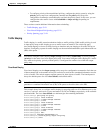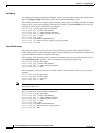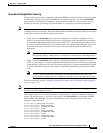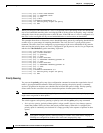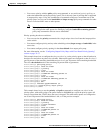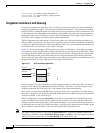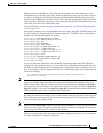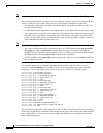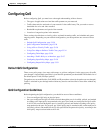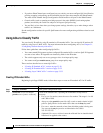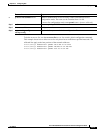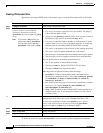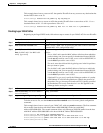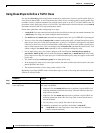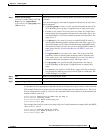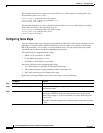
33-29
Cisco ME 3400 Ethernet Access Switch Software Configuration Guide
OL-9639-06
Chapter 33 Configuring QoS
Configuring QoS
Configuring QoS
Before configuring QoS, you must have a thorough understanding of these factors:
• The types of applications used and the traffic patterns on your network.
• Traffic characteristics and needs of your network. Is the traffic bursty? Do you need to reserve
bandwidth for voice and video streams?
• Bandwidth requirements and speed of the network.
• Location of congestion points in the network.
These sections describe how to classify, police, and mark incoming traffic, and schedule and queue
outgoing traffic. Depending on your network configuration, you must perform one or more of these
tasks.
• Default QoS Configuration, page 33-29
• QoS Configuration Guidelines, page 33-29
• Using ACLs to Classify Traffic, page 33-30
• Using Class Maps to Define a Traffic Class, page 33-34
• Configuring Table Maps, page 33-36
• Attaching a Traffic Policy to an Interface, page 33-37
• Configuring Input Policy Maps, page 33-38
• Configuring Output Policy Maps, page 33-51
Default QoS Configuration
There are no policy maps, class maps, table maps, or policers configured. At the egress port, all traffic
goes through a single default queue that is given the full operational port bandwidth. The default size of
the default queue is 160 (256-byte) packets.
The packets are not modified (the CoS, DSCP, and IP precedence values in the packet are not changed).
Traffic is switched in pass-through mode without any rewrites and classified as best effort without any
policing.
QoS Configuration Guidelines
Before beginning the QoS configuration, you should be aware of these conditions:
• You can configure QoS only on physical ports.
• On a port configured for QoS, all traffic received through the port is classified, policed, and marked
according to the input policy map attached to the port. On a trunk port configured for QoS, traffic
in all VLANs received through the port is classified, policed, and marked according to the policy
map attached to the port. If a per-port, per-VLAN policy map is attached, traffic on the trunk port is
classified, policed, and marked for the VLANs specified in the parent-level policy, according to the
child policy map associated with each VLAN.



